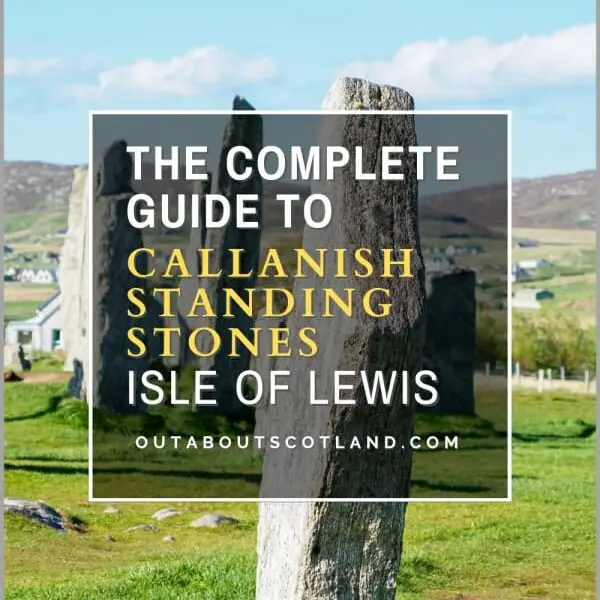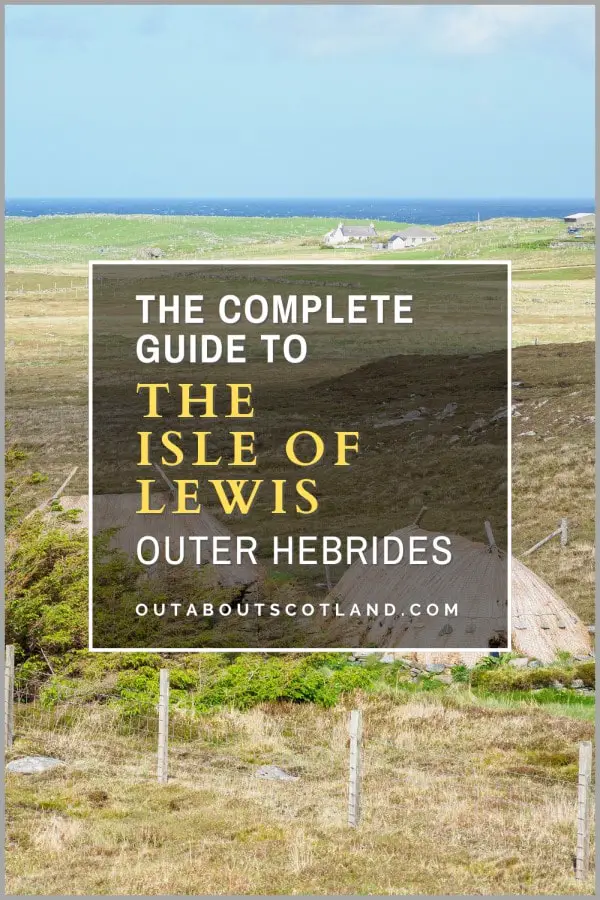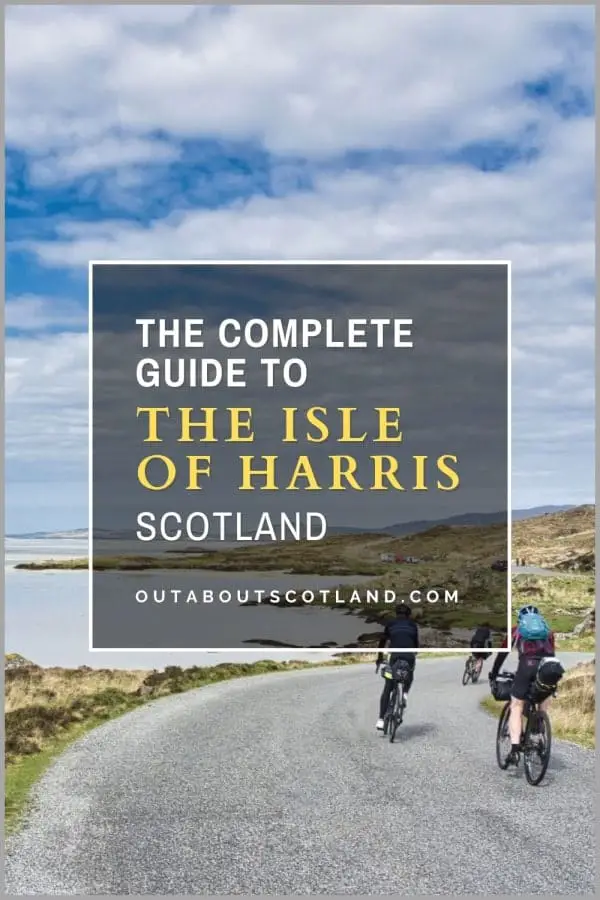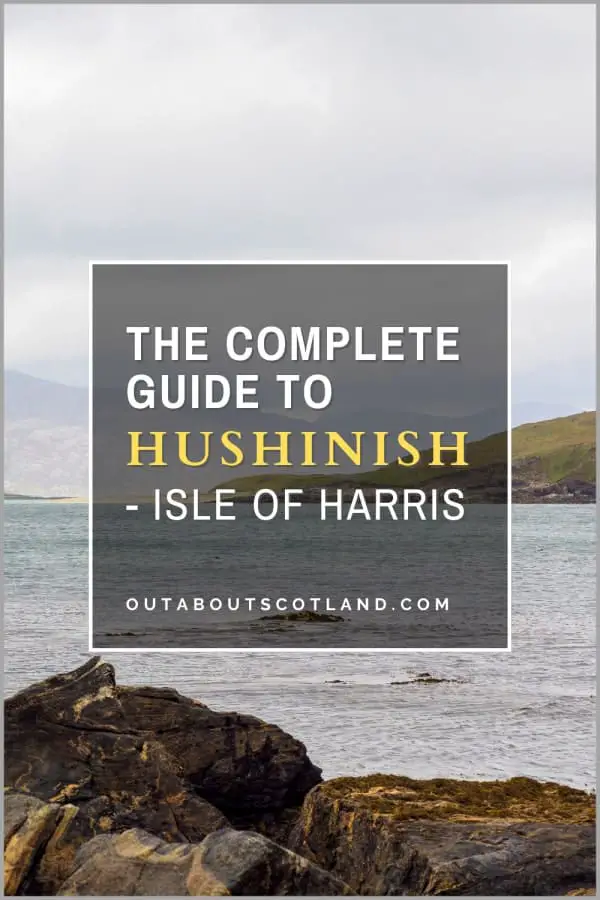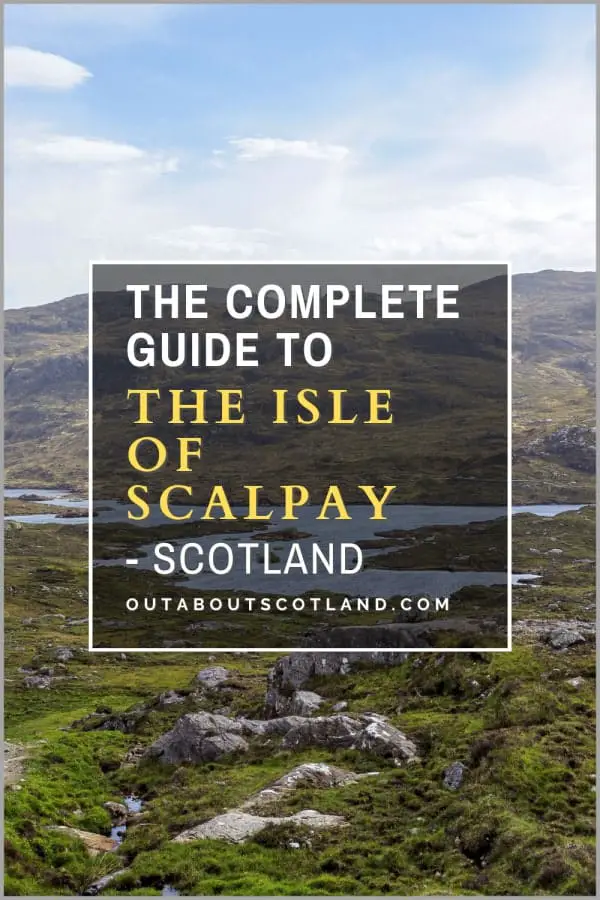The Callanish Standing Stones are located on the Isle of Lewis in the Outer Hebrides and are regarded as the finest stone circle in Scotland. These huge granite stones (the largest is 16 feet tall) were erected 5,000 years ago in the late Neolithic era, possibly for ritual use.
The site comprises a cross of monoliths around a central circle of 13 stones, with an avenue of another 19 stones facing northeast. Discover this incredible historic attraction on Harris and Lewis with this complete visitor guide.
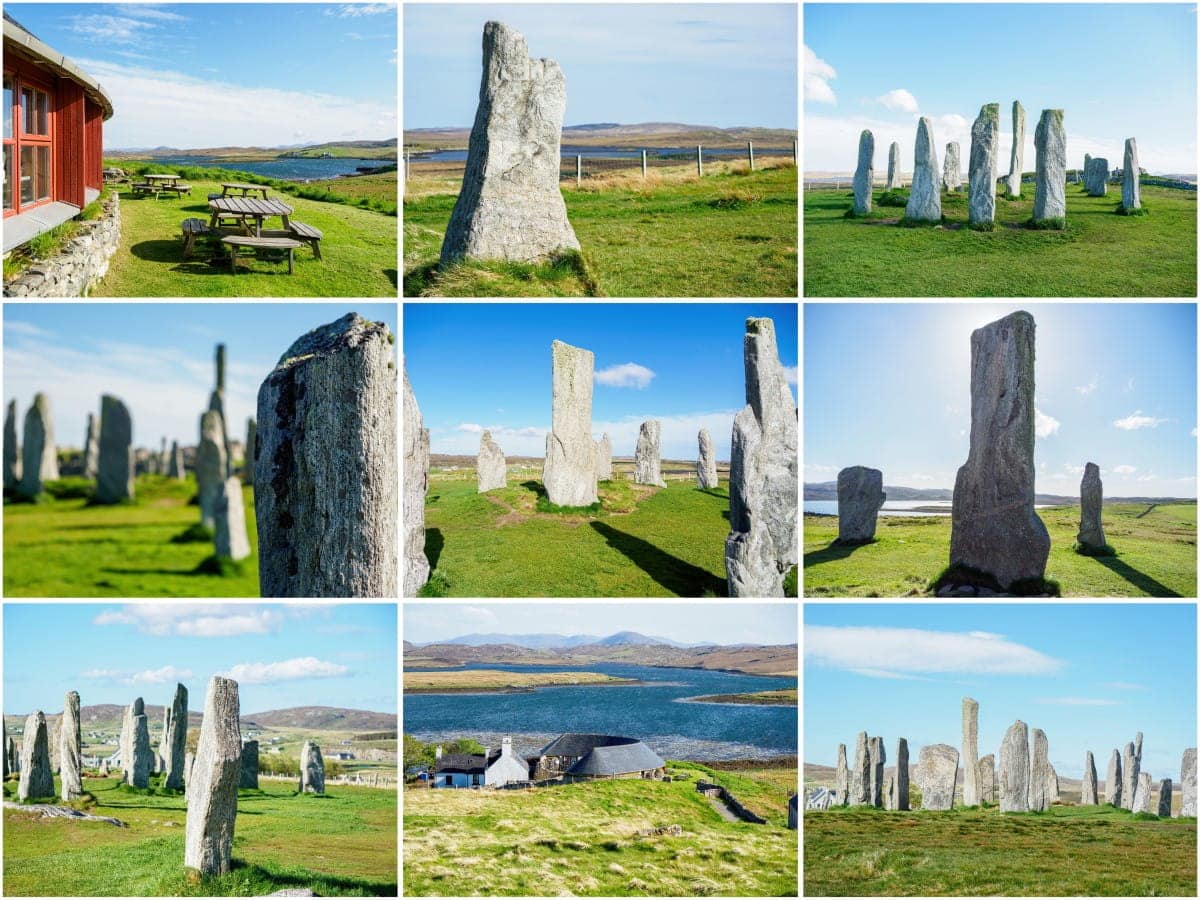
| Address: | Calanais, Isle of Lewis, HS2 9DY |
| Opening Hours: | The Callanish Standing Stones are open 24/7. The visitor centre is open Tuesday to Saturday from 10 am to 5 pm. |
| Admission Price: | The Calanais Standing Stones are free to visit. Visitor Centre: Adults £3.50 Concession £2.80 Child £2.00 |
| Parking: | Free on-site car park |
| Contact: | 01851 621422 hello@calanais.org |
| Facilities: | Cafe, toilets, exhibition, shop, partial disabled access, picnic area |
| Photos: | Virtual Tour |
Overview
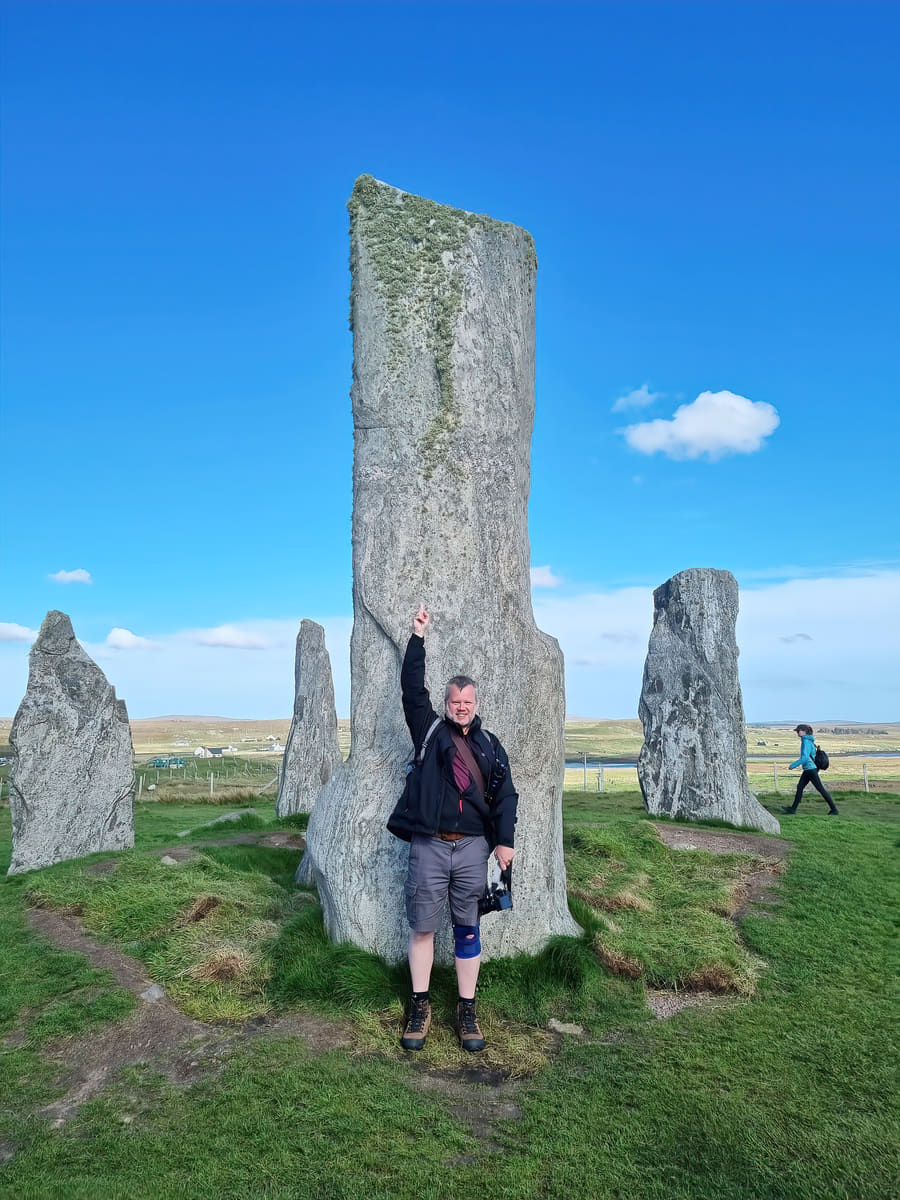
The Callanish Standing Stones are an impressive Neolithic monument located on the Isle of Lewis in the Outer Hebrides. Erected around 2900 BC, the stone circle consists of 13 primary stones with a 16-foot monolith near the centre. Brimming with ancient mystery, the circle is a significant archaeological site that was possibly used for astronomical observations in the prehistoric era.
The Outer Hebrides are well known for their rich archaeological heritage. Remnants of blackhouses (a type of longhouse with a 5,000-year-old design) can be found on most of the islands, as can ancient standing stones.
While many of these monoliths are single blocks of weathered stone, there’s one site where dozens of them have been erected in the form of a giant stone circle, similar to Stonehenge but without the horizontal mantles.
At Callanish on the Isle of Lewis, visitors can explore an excavated site that is believed to have been built sometime around 3000 BC, predating Stonehenge by at least 500 years. What you’ll see during a visit is a ring of giant slabs of Lewisian gneiss, one of the oldest types of rock on the planet that was formed around 3 billion years ago.
These stones have been positioned in a circle around a central 16-foot slab, which in turn is surrounded by a cruciform pattern of smaller stones that radiate out like the points of a compass.
Towards the northeast, a long line of stones forms an avenue 270 feet long and the entire design looks similar to a Christian cross, although these rocks were positioned millennia before Christianity spread across Europe. So what was the site used for?
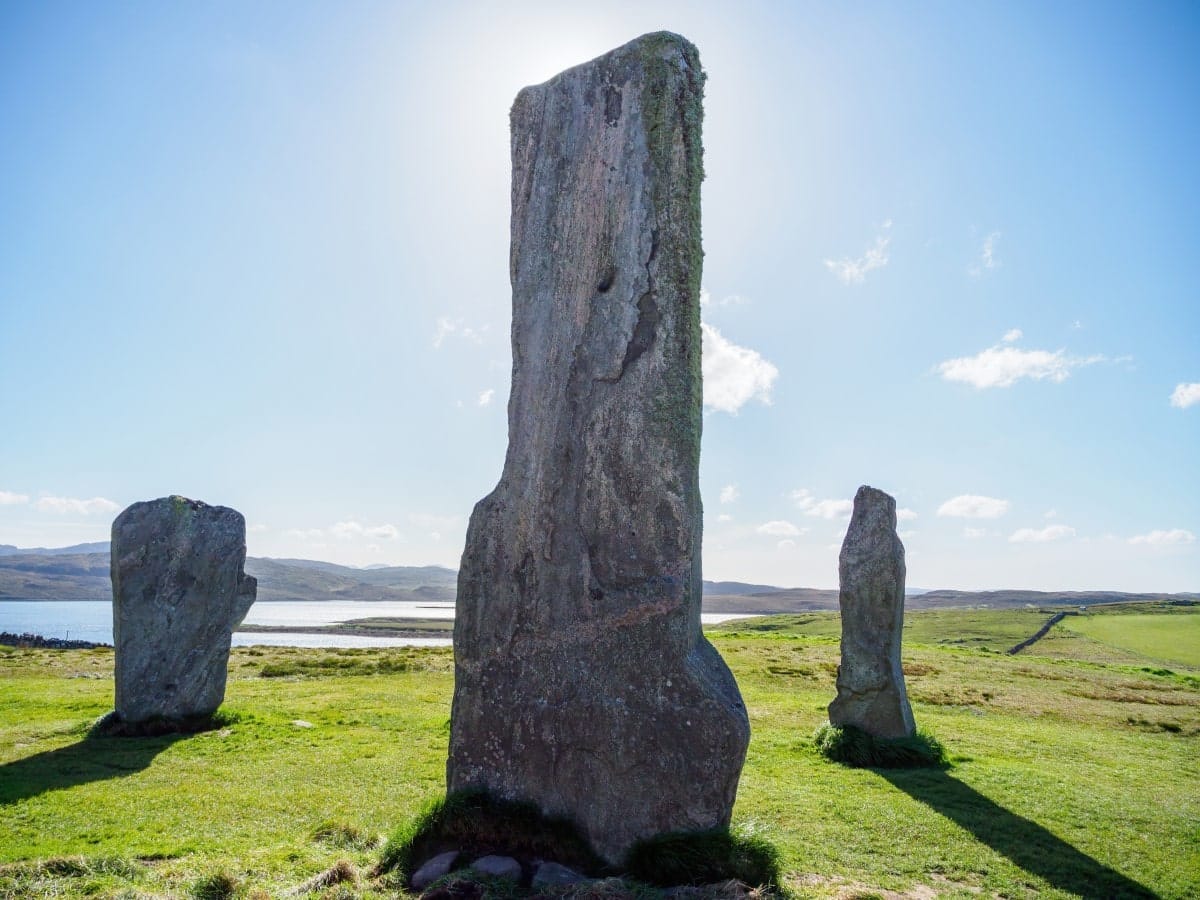
Some historians believe it was an ancient lunar observatory, perhaps used to track the movement of the moon and therefore predict what the tides would do on any given day in the future—something that would be very useful to people living on an island.
Other theories suggest the stone circle was part of an elaborate agricultural ritual for druids, while local legends say the stones are actually the remains of petrified giants who were cursed for refusing to accept Christianity.
Truth be told though, no one knows exactly what the Callanish stones were used for, though it’s a known fact that every 18.6 years the full moon skims the horizon exactly at the very end of the northern avenue before sinking down again a few minutes later.
Whether that had any significance to Scotland’s ancient tribespeople we may never know, but they certainly had enough of an interest in Callanish to invest a huge amount of resources in creating a stone circle there.
The stone slabs were moved from hills over a mile away across boggy ground that historians calculate would have taken at least a year to traverse using the tools of the time. As an example of the effort that would have been needed to create the stone circle, consider that the centre stone weighs over 7 tonnes, and there are 19 stones in the northern avenue alone!
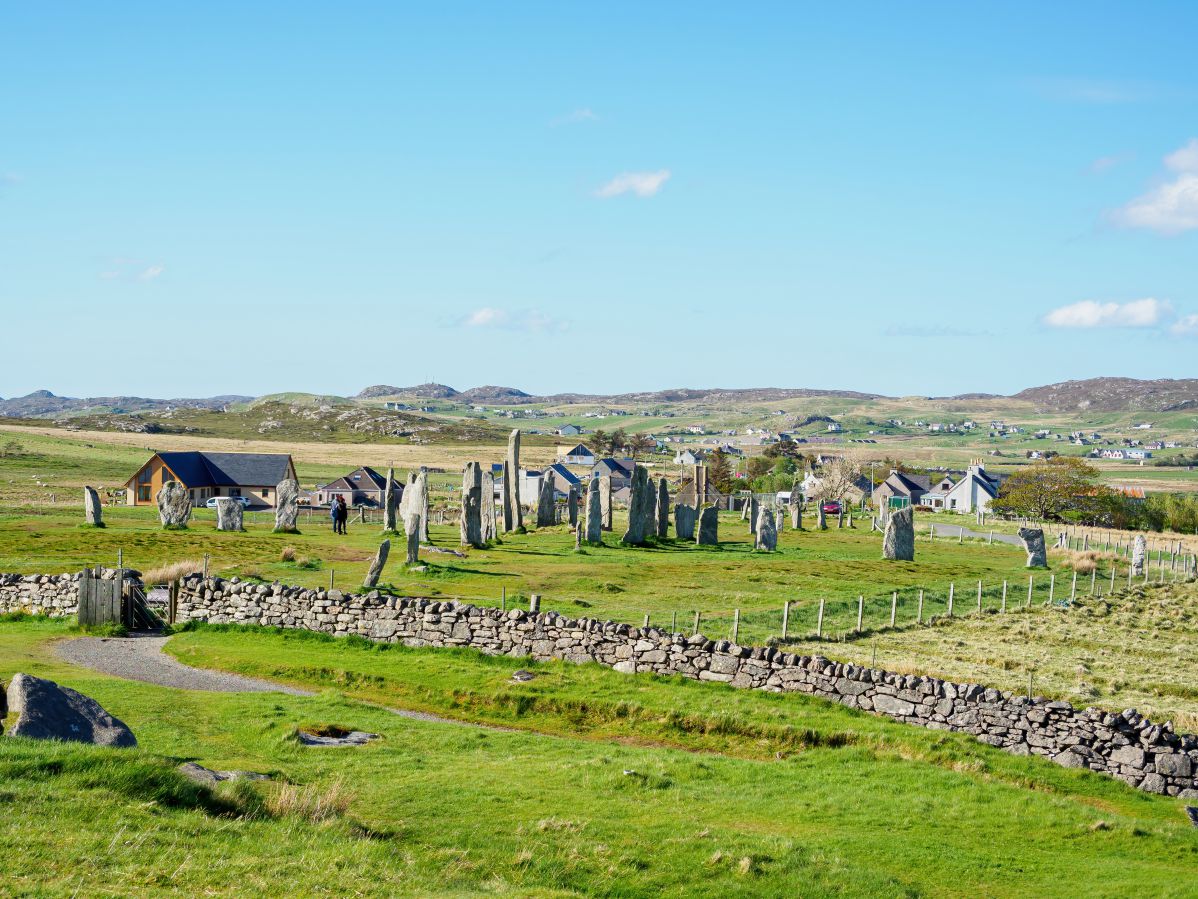
The Highlights
1: For a slice of ancient Scottish history, nowhere else comes close to the stone circle at Callanish. These enormous slabs of Lewisian gneiss rival Stonehenge insize, yet unlike that tourist trap to the south, you can actually get up close to the stones and touch them.
2: The surrounding countryside is just as dramatic as the stone circle. The promontory of Callanish is surrounded by islets, lochs, low-lying fields, and hill ridges that extend far into the distance. On a sunny day, it’s nothing short of spectacular.
3: The visitor centre is pretty good, and in fact, it’s one of the best on the island. Inside, visitors will find a cafe (the cakes are superb), a tea shop, and a genuinely interesting exhibition. It’s definitely worth paying the small entrance fee to discover the history and legends that surround this remarkable site.
Visiting Tips
1: Something that’s not widely advertised is the fact that there are a number of smaller stone circles surrounding the main circle at Callanish. The easiest to get to is Callanish 2, which is situated at the end of a single-track road just before turning to the main site on the A858. All of these periphery circles are marked on Google Maps as well as OS Maps (see further down this page to buy an OS Map of Lewis).
2: If you’re after food and a hot drink, you should check out the visitor centre cafe, as there’s nowhere else to eat for miles around. The cafe serves decent food at reasonable prices, and there’s an outdoor seating area where you can munch a scone or two and look across the twinkling waters of Loch Ceann Huabhaig.
3: As interesting as the stones are, a full walk around them plus the exhibition and cafe won’t take much more than two hours. Thankfully, there are a couple of other historic sites in the area, the pick of which has to be Gearrannan Blackhouse Village. Dun Carloway Broch is worth checking out, too. Both are located north of Callanish and are signposted from the A858.

Tourist Information
Getting to Callanish is easy as it’s a simple case of following the A858 west from Stornoway. Be aware, though, that Gaelic is still prevalent on Lewis and the site is listed on maps as Calanais Standing Stones while road signs name it Chalanais Standing Stones.
The A858 road is double-lane and fairly fast-moving (unheard of on most Scottish islands) so it shouldn’t take more than half an hour to drive from Lewis’s largest settlement to the historic attraction. Once there, you’ll find a large free car park next to a visitor centre, with the stones around 1/4 mile away on a small hill accessed from a gravel and grass track.
Visitors are welcome to head straight to the stone circle if they wish and there’s no fee to do so, but I personally recommend taking a look inside the visitor centre first. The centre is a reasonable size and features an excellent cafe with outdoor and indoor seating, as well as a gift shop and an exhibition.
The exhibition only costs a few pounds to enter and it’s highly recommended to spend time there before seeing the stones as there’s lots of information about the Calanais standing stones history, who built the circle, and why. The exhibition also delves into the Callanish stone myths, which is a fascinating topic that offers a glimpse into Scotland’s prehistoric culture.

From the visitor centre there’s a narrow gravel path leading to the small hill on which the stones sit which should be accessible for wheelchairs and pushchairs, though on the day I visited the hill was rather slippery with mud after a rainfall – and it rains a lot on Lewis.
An alternative access point can be found on a single-track road that runs behind the visitor centre. This road leads directly to the rear of the site, and there’s a gate in the fence where you can access the stones next to a small parking area. To find this road, take the right turn, which heads uphill immediately before the visitor centre.
Once in the circle you might be surprised to find you’re allowed to walk around and touch the stones as you please, so if you’re a fan of the TV show Outlander feel free to touch the stones all you like while imagining you’re at Craigh na Dun.
In addition to the main stone circle there are a number of smaller circles dotted around this part of Lewis, most of which are situated in the middle of boggy fields so you might consider wearing waterproof boots (my recommended boots) before heading out to find them.
One of these circles (Callanish 8) is particularly interesting as it’s situated on the islet of Great Bernera, which is very sparsely populated and has an incredible remoteness that makes you feel like you’re at the end of the world. While on Great Bernera, follow the single-track road to the far north of the island at Bosta Beach, where you’ll find a fascinating Iron Age house and a lovely shallow bay.
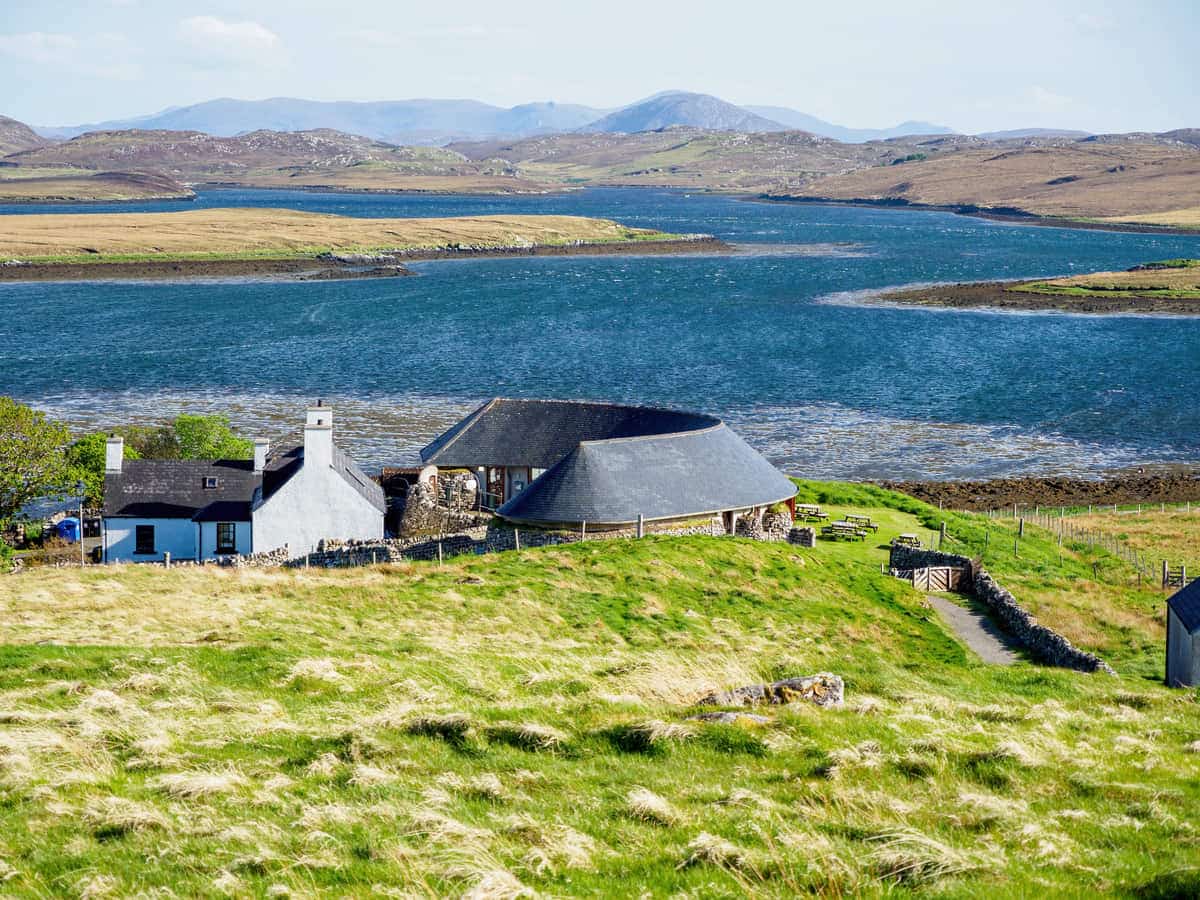
Things to Do
Explore the Stones: Visit the main stone circle, built around 5,000 years ago, marvel at the size of them, and feel the mystery surrounding the Neolithic structure. Unlike Stonehenge, at Callanish you can actually walk right up and touch the stones.
Visit the Visitor Centre: The Callanish Visitor Centre provides insightful exhibitions about the stones and their history. It’s a great place to learn more about the site’s significance and the people who built it.
Photography: The Callanish Standing Stone Circle is a photographer’s dream location. Stunning landscapes, giant stones, and breathtaking sunrises and sunsets guarantee some amazing photographs.
Hiking: The area around the stones has some truly great hiking trails. Enjoy stunning views over the surrounding countryside on trails that are suitable for all fitness levels.
Stargazing: On a clear night, the site offers an incredible stargazing opportunity. The lack of light pollution makes it an ideal spot to view the Milky Way as well as (if you’re lucky) the Aurora Borealis. To know more about Scotland’s ‘mirrie dancers’ read: The Best Places to See the Northern Lights in Scotland.
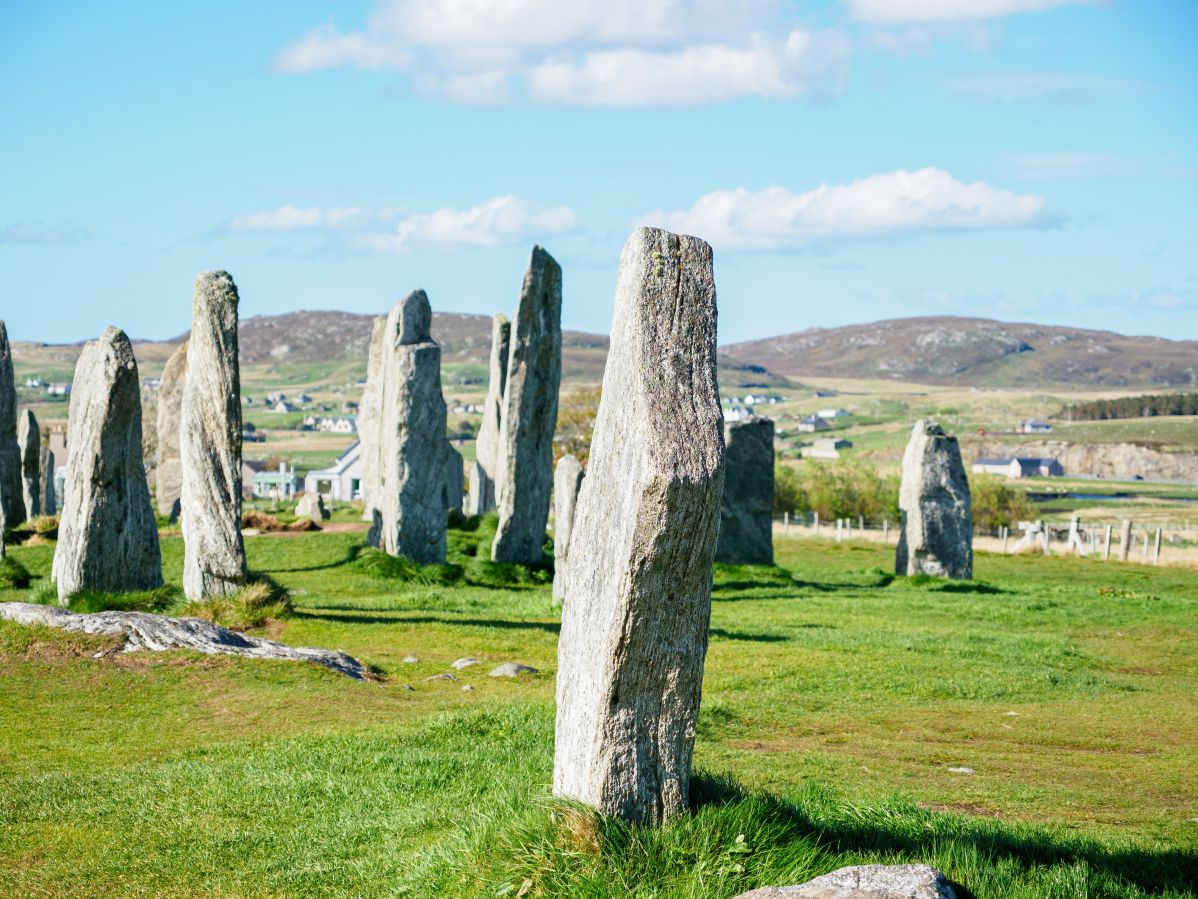
Things to Do Nearby
Norse Mill and Kiln. Address: Isle of Lewis, HS2 9BJ. Distance: 11.2 miles. A fine example of two restored Scandanavian buildings situated next to Loch Raoinebhat. There were more than 200 such mills and kilns in the past but few remain today. The kiln was in use until the 1930s. The mill and kiln are free to visit and are accessible via a small car park off the A858.
Reef Beach. Address: Kneep, Isle of Lewis, HS2 9HS. Distance: 21 miles. Reef Beach is a pristine mile-long white sand beach in a particularly scenic location. The beach has been likened to a smaller version of Luskentyre Beach—high praise indeed.
Dun Carloway Broch. Address: Isle of Lewis, HS2 9AG. Distance: 6.3 miles. Dun Carloway is an ancient Scottish fortification (known as a broch) that was built in the 1st century AD. The broch is one of the best-preserved in Scotland, with walls up to 30 feet high.
Bosta Iron Age House. Address: Bosta Great Bernera, Isle of Lewis, HS2 9LZ. Distance: 15 miles. A preserved Iron Age house that’s situated at the end of Bosta Beach on the islet of Great Bernera. There is an occasional on-site guide to explain how the house was built and what life would have been like inside it.
Callanish 2 and 3. Address: Callanish, Isle of Lewis, HS2 9DY. Distance: 1 mile. Stone circles that are smaller than the main site at Callanish and are from the same Neolithic era. Callanish 2 and 3 are believed to have been used for rituals, possibly astronomy. Entry to both sites is free.
Frequently Asked Questions
Can you touch the Callanish Stones?
Visitors are permitted to touch the standing stones at Callanish. There are no barriers in place and visitors are free to walk amongst them. In addition, there are no barriers at any of the smaller Callanish stone circles.
Are the Callanish Standing Stones older than Stonehenge?
The Callanish Standing Stones are older than Stonehenge. The main Callanish stone circle was erected around 3000 BC, and the stone circle at Stonehenge was erected around 2500 BC.
Why were the Callanish Stones built?
There is no proven theory as to why the Callanish Standing Stones were erected. However, historians believe the stone circle was either used as a lunar observatory or as a place for agricultural rituals.
According to local folklore, druids used the monoliths as a place of worship. According to myth, the monoliths are giants who an enchanter turned to stone after they refused to accept Christianity.
Who built the Callanish Stone circle?
The Callanish Standing Stones were erected in the late Neolithic era, approximately 5,000 years ago. It is unknown exactly who the builders were, but it is known the giant slabs of Lewisian gneiss were dragged over a mile from nearby hills. Historians believe it would have taken 50 workers one year to erect each stone.
What attractions are near Callanish Standing Stones?
Here are a few attractions that are located within driving distance of the Callanish Standing Stones:
Gearrannan Blackhouse Village: This village is located about 9 miles southeast of the Callanish Stones and is a living museum of traditional blackhouses.
The Harris Distillery: This distillery is located about 35 miles east of the Callanish Stones and produces single malt whisky using traditional methods.
The Western Isles Military Museum: This museum is located about 15 miles east of the Callanish Stones and is dedicated to the history of the military in the Western Isles.

